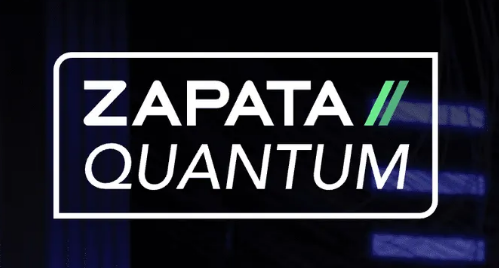Insider Brief
- Toshiba Europe and Orange presented research findings that show quantum key distribution can be successfully deployed on network provider’s existing fibre networks alongside their current data services.
- The researchers say the work could help network operators reduce the cost of implementing QKD by removing the need to invest in dedicated quantum fibre infrastructure.
- Critical Quote — “Validating the ability of our QKD technology to protect transmissions while using existing fiber networks is a huge step forward in making quantum-secure communications accessible for today’s organizations. Working with global operators such as Orange to conduct research and improve our technology has been vital, and we look forward to continuing our work in this area.” — Andrew Shields, Head of the Toshiba Quantum Technology Division.
PRESS RELEASE — Toshiba Europe Ltd. and global telecommunications operator Orange have demonstrated the viability of deploying Quantum Key Distribution (QKD) on existing commercial networks to protect transmissions from being decrypted by quantum computers.
A new research paper presents findings from joint tests using Toshiba’s commercially available QKD technology, which shows how the technology can be successfully deployed on network provider’s existing fibre networks alongside their current data services. These findings could help network operators reduce the cost of implementing QKD by removing the need to invest in dedicated quantum fibre infrastructure.
The continuing advancement and commercialization of quantum computing poses risks to current methods of public key encryption which are likely to be rendered insecure. Toshiba’s QKD, which uses the quantum properties of light to generate secure random keys for encrypting and decrypting data, has been developed to provide protection against the power of future quantum computers.

Previously, this required network operators to invest in dark fibre across their network specifically for sending quantum information, increasing the cost and time to adoption. A technique called Wavelength Division Multiplexing (WDM) has made it possible for QKD to operate on existing fibre networks by using spectral separation (utilizing different wavelengths of light to avoid interference) to allow the quantum signal to coexist with an operator’s classical data signals. However, previous tests have shown issues that affect the viability of such deployments, such as the possible number and power of the data channels, the effective network distance and the secure bit rate (sometimes called secure key rate or SKR) achieved.
Across 2022 and 2023, Toshiba and Orange conducted tests at the Orange Labs in Lannion, France, to validate the co-existence of QKD and classical data signals and research how different factors affect the efficiency of sending both classical and quantum signals over existing fibre networks running classical data services.
Through the tests, researchers from Toshiba and Orange demonstrated the effective co-propagation of the classical and quantum signals with high secret bit rates, allowing them to co-exist while still being capable of effectively delivering keys at distances of up to 70km, showing great promise for deployments in metro networks in built-up areas.
The researchers also made new findings that have led to the proposal of an updated metric to help measure the efficiency of such systems. Based on this metric, they determined that the new QKD implementation outperformed previous co-propagating experiments.
“This work shows that we can have co-propagation of the quantum channel with WDM data channels in the same fiber, without changing the engineering rules of the operational WDM links. The high secret key rate obtained in this configuration is very promising for the introduction of QKD in operator’s networks,” said Paulette Gavignet, Senior Expert in Optical Communication at Orange Innovation.
“Our commitment to security and innovation has led us to push the boundaries of Quantum Key Distribution (QKD) solutions,” said Laurent Leboucher, Group CTO and SVP, Orange Innovation Networks. “It could be a key to offer unparalleled protection for optical transport networks. Together with Toshiba, we showed that it is possible to introduce new security functions in the operators’ networks without requiring the use of dedicated fibres. With this cost-effective approach, we pave the way towards a digital fortress, guaranteeing the security of our customers’ most valuable data.”
“The rise of quantum computing has serious implications for current security methods and organizations need to take action now to mitigate risks to their communications,” said Dr Andrew Shields, Head of the Toshiba Quantum Technology Division. “Validating the ability of our QKD technology to protect transmissions while using existing fiber networks is a huge step forward in making quantum-secure communications accessible for today’s organizations. Working with global operators such as Orange to conduct research and improve our technology has been vital, and we look forward to continuing our work in this area.”
Researchers demonstrated and evaluated a 1310-nm quantum channel multiplexed with up to 60 data channels (each carrying 100Gb/s bit rate) in the telecommunication C band across a commercially available Toshiba QKD system. The ability to multiplex classical data while retaining excellent QKD performance was enabled by the system’s novel design, which included high-extinction spectral filters and time-domain gating used to help isolate the quantum signal and reduce noise introduced from the classical channels.
Tests were run with both 30 and 60 multiplexed channels over 20 km, 50 km and 70 km fibre lengths. The researchers measured the secure bit rate (SKR) over the different distances to understand how effectively the system could successfully transmit quantum keys alongside classical data channels, as well as optical launch power of the data services.
The tests found that the high number of WDM channels used in this evaluation (up to 60 data channels) had a minimal impact upon SKR. Instead, it was found that the aggregated data channel optical launch power used in the system was the most influential factor on the SKR and successful delivery of keys. As a result, Orange and Toshiba have proposed a new metric – Co-propagation Efficiency (CE) – which can estimate the performance of the QKD system (its ability to deliver secure keys successfully with a good SKR) in a co-propagation regime while considering the total power of the classical channels and the transmission distances.
The paper demonstrated that large numbers of classical data channels at high optical launch powers can co-exist with QKD, meaning that the Toshiba QKD system can be used on existing operator networks in conjunction with their current data services – drastically reducing the amount of money needed to invest in and maintain QKD services, as well as time to deployment.
These findings have two key implications for the viability of using QKD to secure communications against attack by quantum computers at a commercial level. Firstly, it shows that the commercially available equipment evaluated by Toshiba and Orange is successful at allowing QKD to be more effectively deployed on current fibre networks. Secondly, the new metric developed by the researchers, which acknowledges that power (and not the number of channels) has the most impact on efficiency, may aid operators in network and service planning.
Using these results, Toshiba, Orange and other organizations looking to implement QKD will be better positioned to do so over existing fibre networks, reducing the overall cost of implementing this vital form of cybersecurity today.
To read the full research paper, please visit: https://arxiv.org/abs/2305.13742
For more information on Toshiba’s QKD services and quantum technology offerings, please visit: https://www.toshiba.eu/quantum/
For more market insights, check out our latest quantum computing news here.
















